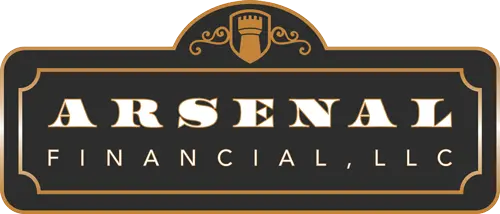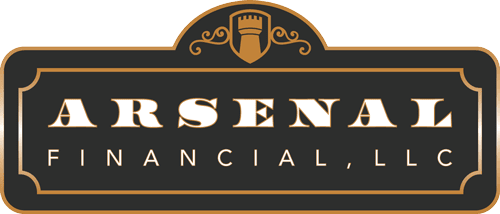When the pandemic first struck two years ago and the stock market took a big hit, we knew right away that everyone would be thinking about the impact on their health, earning potential, investments and a myriad of other things. It’s impossible not to think about your financial situation when something of that magnitude impacts everyone around the world. We helped a lot of people over Zoom: some families wanted to revamp their retirement plans (some even calling it quits sooner than planned), others took the opportunity to rebalance their 401(k) accounts, and some younger clients just began saving in their very first 401(k) accounts.
Many of our clients come to us with broader financial goals in mind, and retirement planning is always a critical part of the equation, since it’s likely the most expensive goal most people have in the course of their lives. How do you get started? What’s the difference between different investment options? Should you be maxing out your 401(k)? And how does this all fit into the backdrop of the market?
We feel so lucky to be able to help those new to the workforce, looking to put their first dollars into their 401(k) accounts, as well as our retiring clients getting ready to take their first dollars out – and everyone in between.
Many of you may still be asking: what is a 401(k) anyway? And how can I better understand mine to take full advantage of it?
What is a 401(k)?
The 401(k) is the gold standard of employer-sponsored retirement plans, and millions of Americans take advantage of these tax-advantaged plans each year.
The concept is simple: you can opt to contribute a percentage of your earnings each paycheck to a separate account – tax-free, pre-tax or after-tax – with annual limits set by the IRS. In addition, many employers will match part of your contribution. This means employers will contribute an equal amount of money (commonly up to 6% of pay) to help grow your retirement fund – “free money.”
As a result, many people will gravitate towards contributing up to the employer’s match with these tax-advantaged accounts. Other “super-savers” may even try to maximize up to the contribution limits.
But before you throw all your extra cash into your retirement account, think again! It’s important to consider your financial situation, as well as your circumstances and the details of the specific plan before making such a commitment of resources. Building a solid financial plan is about more than your 401(k); it also comes down to “paying yourself first,” or earmarking part of your paycheck for savings, as well as focusing on short-term and long-term budgeting. Here’s our complete guide to understanding the pros and cons of maxing out your 401(k) – and what you need to keep in mind before making any major decisions.
401(k) Limits in 2022
How much money can you invest in your 401(k)? In 2022, the maximum amount you can contribute to a 401(k) plan is $20,500 (or $27,000 if you’re 50 or older). That’s over 5% up from the $19,500 limit in 2021.
Other Important Financial Goals to Factor In
Sure, retirement will likely be the most expensive goal most people will save for, but the 401(k) shouldn’t be the only vehicle to consider when planning more broadly. There are several crucial financial goals that you should focus on before you max out your 401(k) contribution. Before putting your extra cash into your retirement savings, consider these goals:
- An emergency fund with three to six months of living expenses
- Leverage an HSA (Health Savings Account) if a company match is offered
- Pay down higher-interest loans
- Are other goals accounted for and prioritized?
- Life insurance for your loved ones
When should you max out your 401(k)?
There are plenty of situations in which it makes sense to max out your 401(k) contributions.
First of all, it’s important to consider when you might retire and what you’d like your lifestyle to look like in retirement. Take into consideration where you currently stand in working towards your retirement goal, and what other sources of income might be available by the age of retirement. Will you have a pension, for example?
Your monthly income should also play a role in deciding whether you max out your 401(k). Does it make sense for you to contribute the maximum amount? Can you live comfortably without straining your budget if you do so?
Another factor to consider: compound growth. If you do opt to max out your 401(k) early in your working life, you can benefit from compound growth. That means your contributions and your employer’s match will be reinvested to generate their own earnings – expediting the growth of your investments.
Even if you’re not in the position to max out your contributions, it’s always a best practice to contribute the minimum amount required to capture your employer’s 401(k) match, if provided. That way, you can take advantage of additional contributions from your employer on your behalf to grow your 401(k).
When should you pass on maxing out 401(k) contributions?
It may not be the best time to try and max out your 401(k) contributions. For example, not all people are in the financial position to add thousands of dollars to their retirement plans each year. If you’re earning $45,000 a year, for example, the $20,500 maximum contribution might be far too steep for you to afford after considering the cost of living. It’s important to remember that your cash flow can increase year-to-year, and you can always opt to increase your contribution over time when your situation allows for extra cash flow.
There are other reasons to hold off from maxing out on your contribution, too. An employer-sponsored plan is likely managed by an outside investment firm and you may or may not have a lot of say in the process. For example, some firms have great investment options, while others may be extremely limiting. The plan design may not be in line with your financial plans and could limit your options. Your employer-sponsored plan might not offer a ROTH option, but you would prefer to pay taxes now as you expect taxes to increase in the future.
Not without their own limitations, other tax-advantaged retirement accounts, like traditional IRAs or ROTH IRAs, will allow you to contribute money each year – all while giving you maximum control over your options. Here’s the bottom line: decisions about allocating resources to your various retirement accounts should be part of a larger, well-developed and complete plan.
Is there an alternative?
If you can’t max out your 401(k), but still want to contribute, consider contributing enough to meet the employer match, if your company offers one. Many employers will match anywhere from 4% to 6% of your compensation (or more, if you’re lucky). Meeting that match is like a percentage increase on your pay, contributed directly towards your retirement.
Some employer plans may also offer a Roth 401(k) provision. With a Roth feature, your 401(k) will not have a tax deduction for contributions; after five years, or when you reach 59 and 1/2 years, distributions are totally tax free. This will allow your account to eventually be rolled over into a Roth IRA to avoid Required Minimum Distributions (RMDs).
Looking at the bigger financial picture
Maxing out your 401(k) may not always be the smartest option. When considering your retirement plans, make sure to take a detailed look at your finances, your upcoming goals, and your plan to better understand how you might plan for a successful retirement.
Not sure where to start? Drop us a line and we’ll help you get started!

